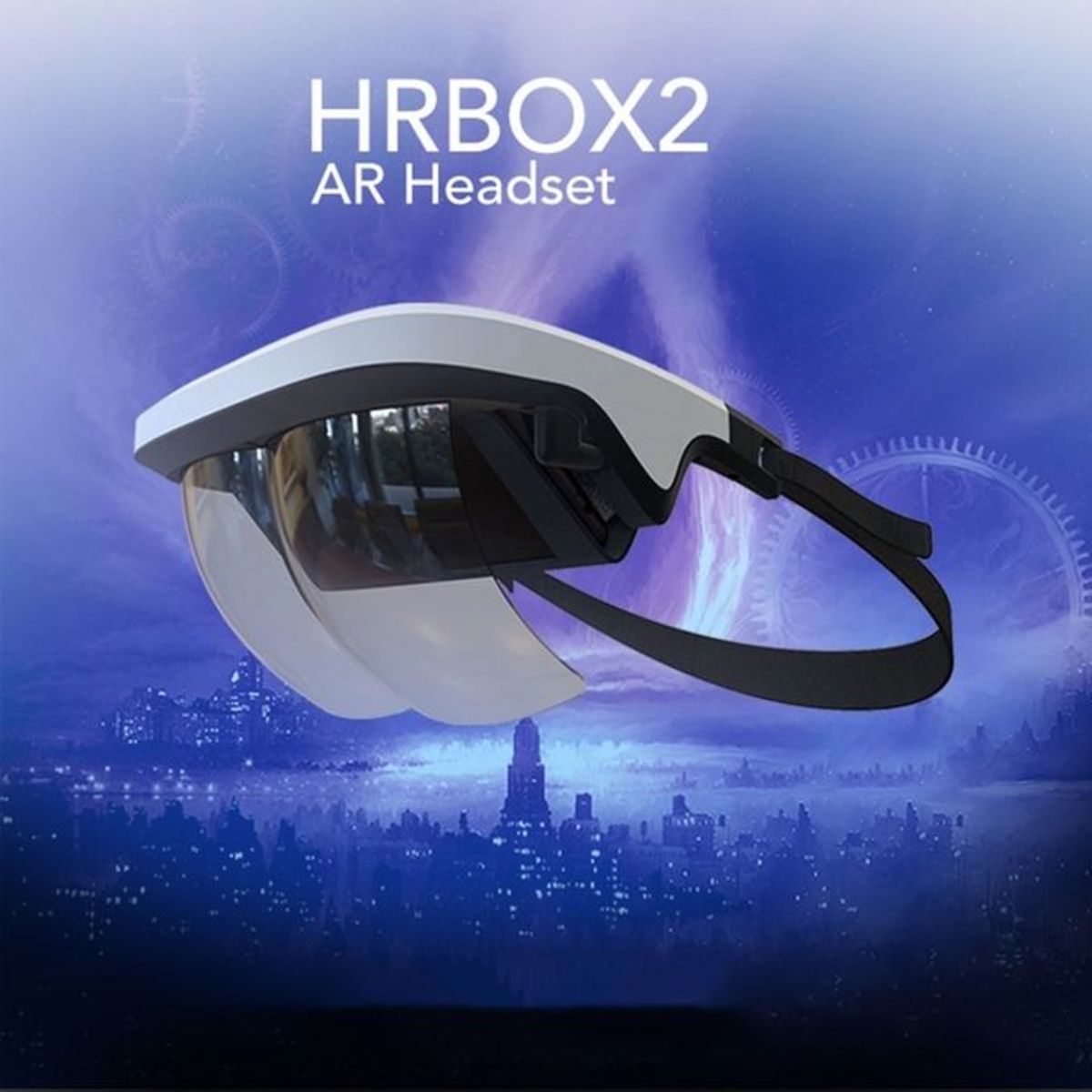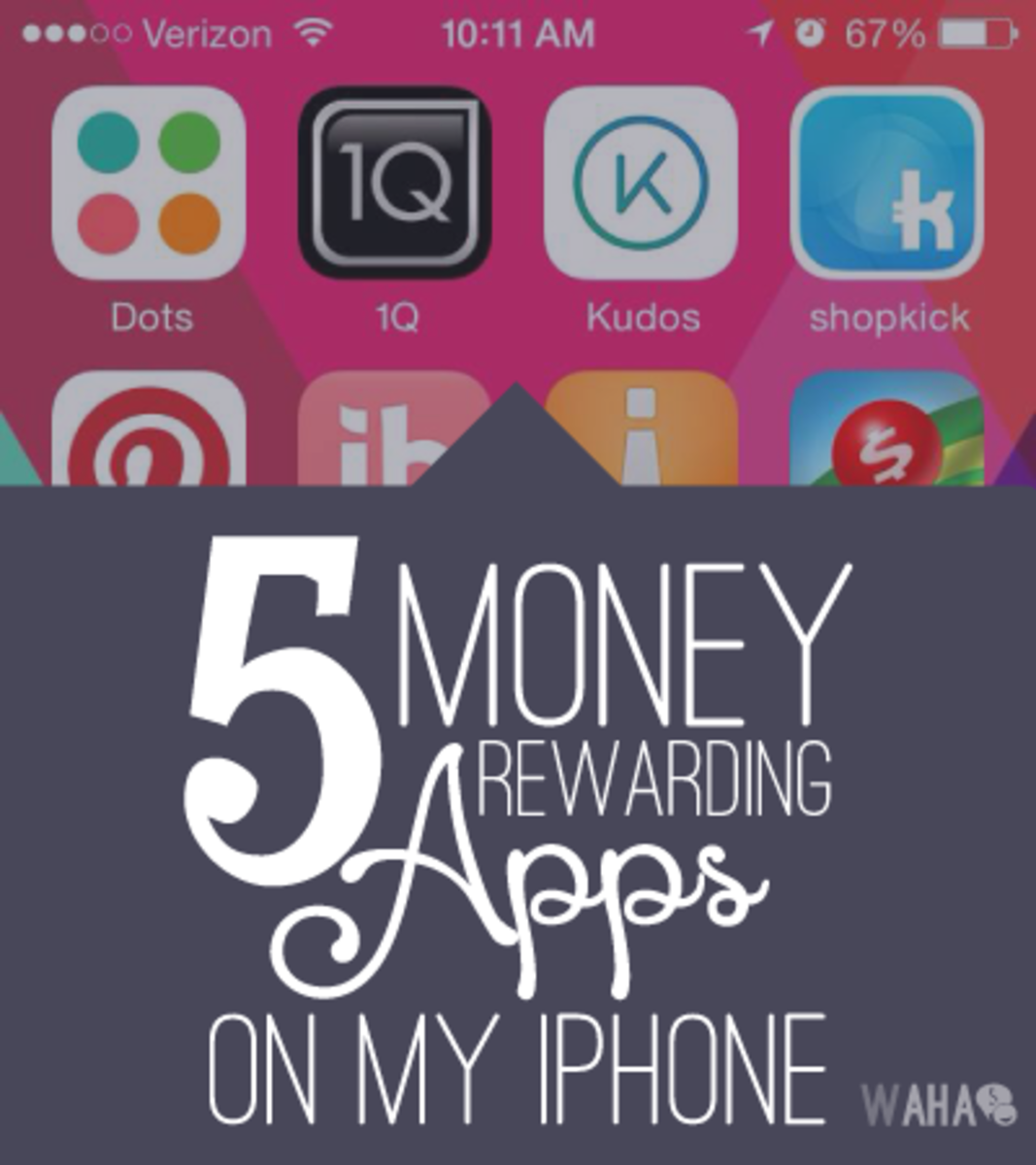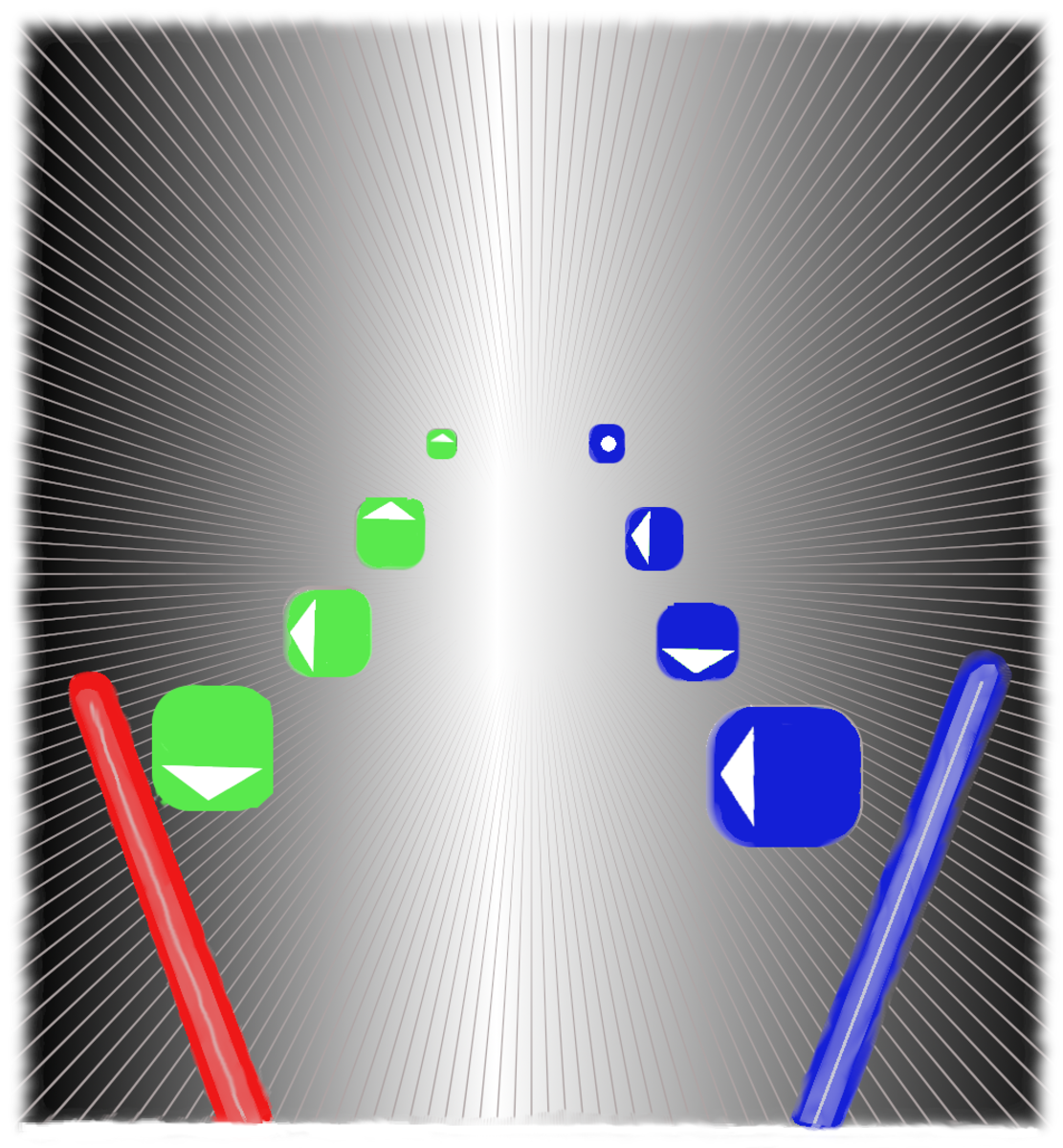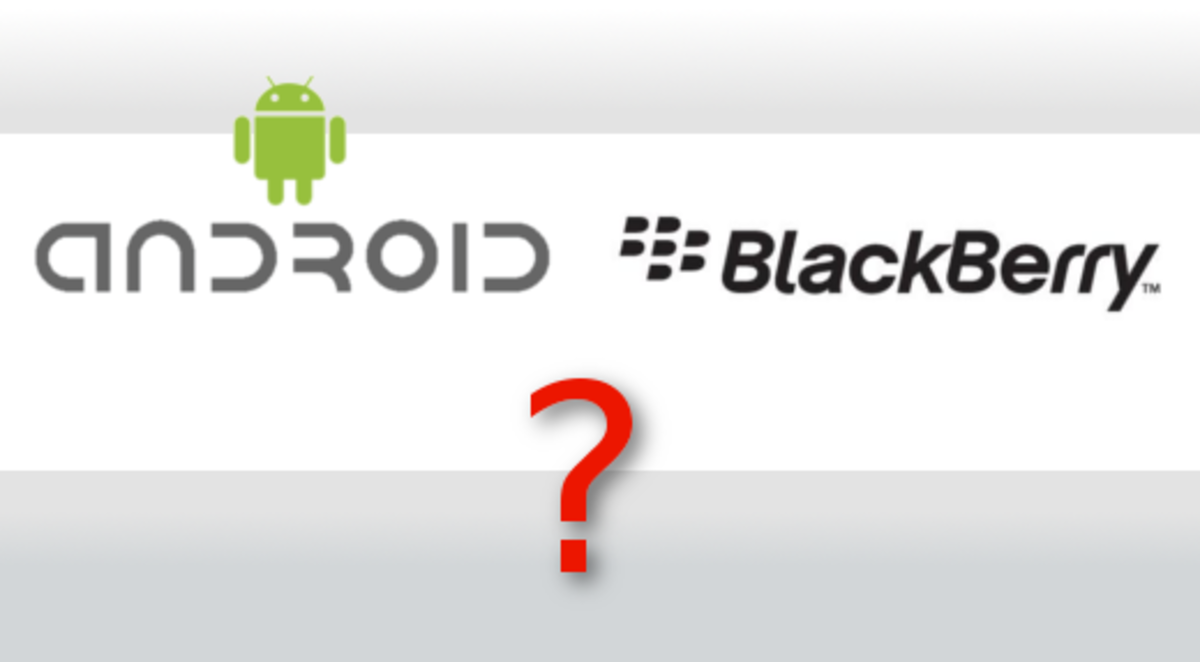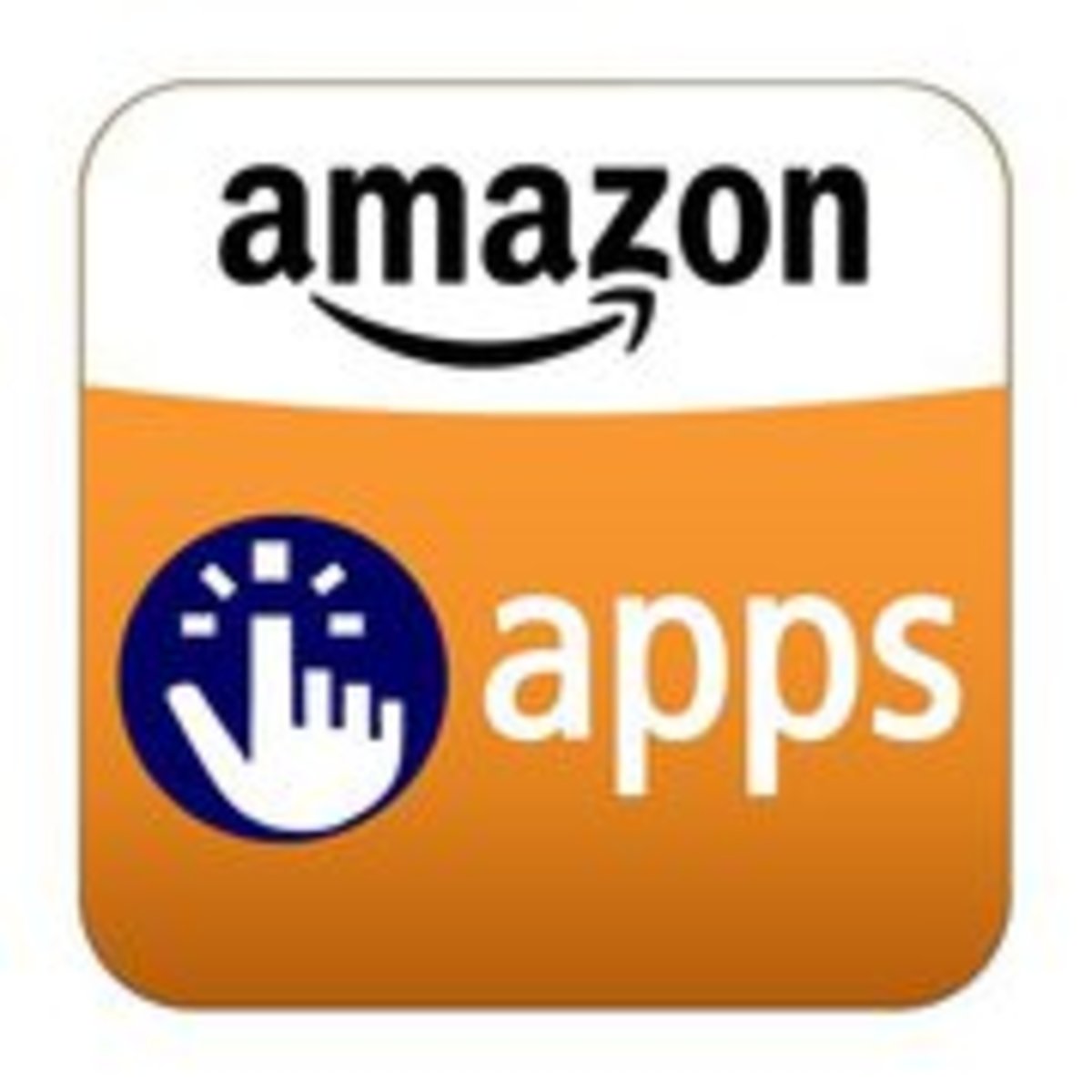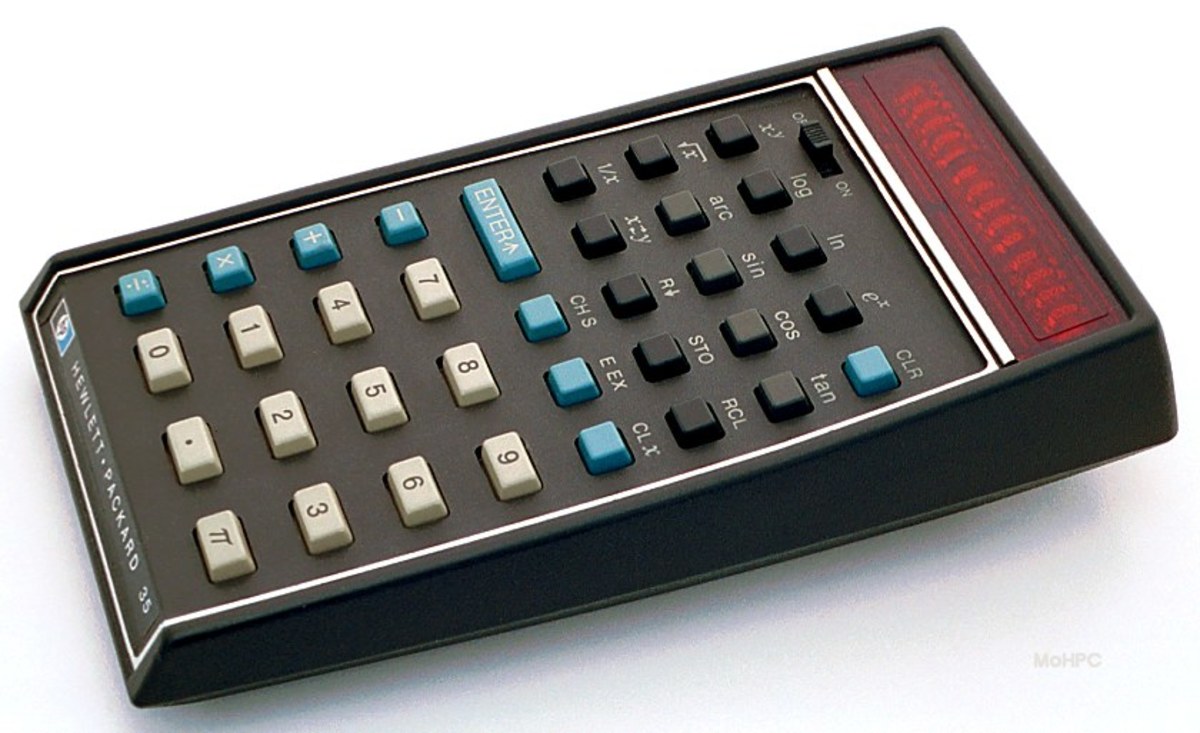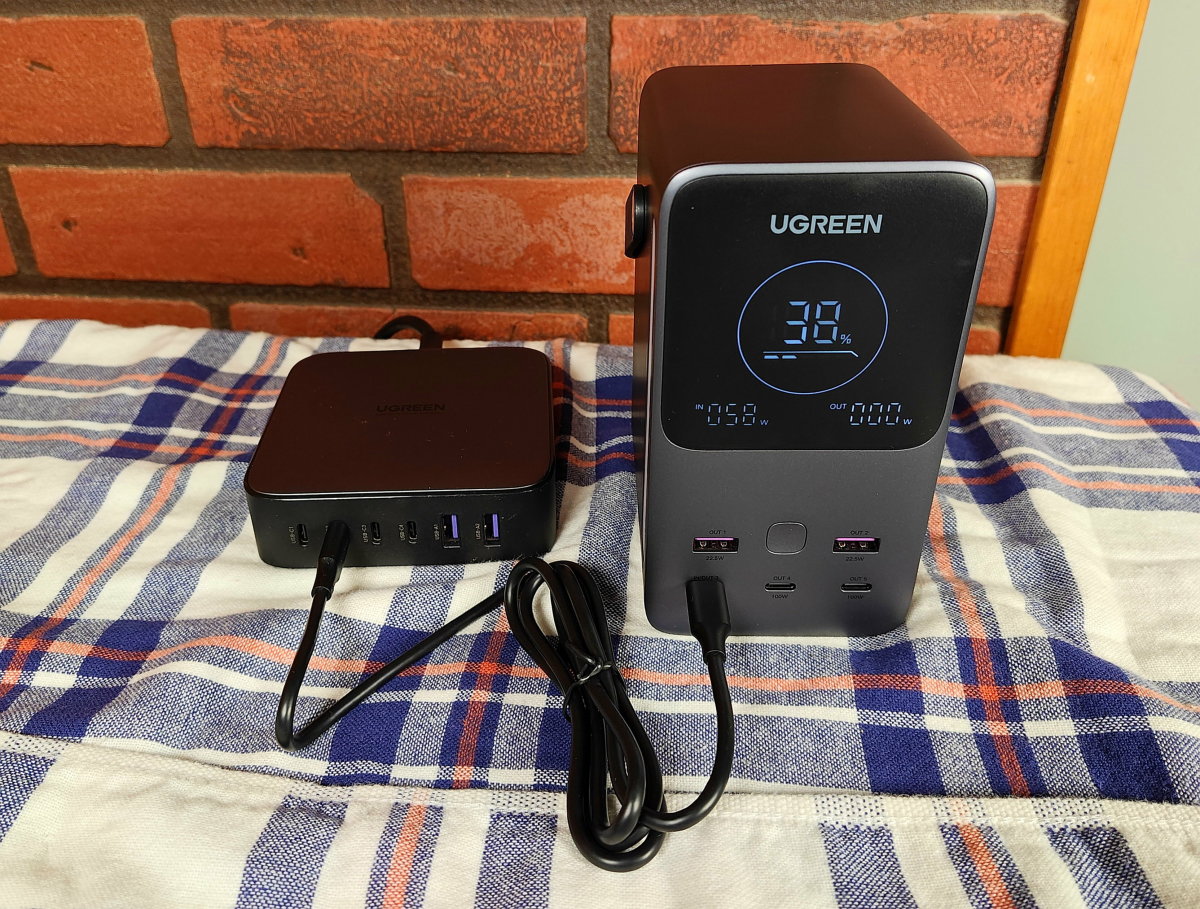Virtual Reality on the iPhone
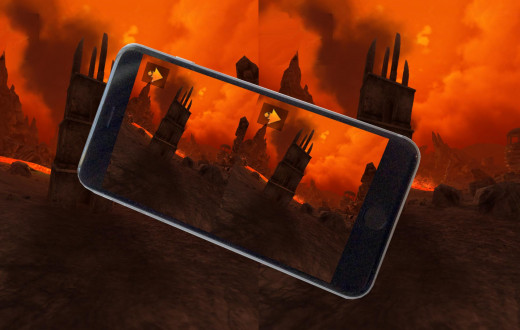
After waiting for literally decades for it to arrive, quality and affordable virtual reality is finally here, and it is hot!
Google has released Google Cardboard. There is a whole section devoted to virtual-reality on the Google Play store. Oculus has announced that a new headset specifically for Android phones will be released in 2015.
Apple, on the other hand, has been pretty mum on the topic of virtual-reality. It has announced no new products or applications; in fact, it hasn't said anything at all about it. Most of the world's attention is focused on the Apple Watch. It seems as if the virtual-reality revolution is being overlooked by a large percentage of the population, at least as far as Apple users go.
Does this mean that iPhone users are left out of the virtual reality revolution? Not at all! Many of the virtual-reality hardware goodies that are being released are cross-platform, meaning that they will work with both Android and iOS devices. In addition, there are a large number of apps and games for the iPhone on the app store, and their quantity is growing all the time.
Why Apple Seems Left Out
One could be forgiven for assuming that Apple and its iconic iPhone are being left out of the virtual-reality revolution. Despite having a gyroscope, accelerometer and other sophisticated technologies needed to determine its position and orientation in space, making it perfect for virtual reality, the hype around VR on Android devices recently has overshadowed the iPhone.
The Samsung Gear VR, For example, has been developed in a collaboration between Oculus, the premier developer of virtual reality devices and Samsung, an Android smartphone manufacturer. The Gear VR will work only with Samsung’s Galaxy Note 4 (newly-announced models support the Galaxy S6 & S6 Edge).
Google, the developer of the Android operating system, has released Cardboard, an inexpensive virtual reality headset that users can make themselves. Again, Apple has seemingly been left out. But what many have overlooked is that cardboard will work with the iPhone just as well as with Android devices.
In fact, Apple users are even better positioned to take advantage of inexpensive virtual-reality than Android users. After all, Apple has its inexpensive iPod touch, which requires no monthly cell phone fees and will run virtual-reality apps nicely. This makes it a great choice for those who wish to experience virtual reality while remaining unencumbered by the expense of a monthly cell phone contract.
Despite Apple’s advantage, there does not yet seem to be a lot of buzz surrounding the use of virtual reality on Apple devices, and it has not been well covered on the major Apple-oriented websites.
Perhaps Apple fans are taking a "wait-and-see" attitude, or perhaps many of them simply don't know that a great virtual reality experience is available to them using the devices many of them already have.
What is available in the App Store? How about a wild roller coaster ride in an “old west” setting - with menacing dragons thrown in for good measure? Or a trek through an abandoned subway tunnel while fending off vicious zombies? Or a ghost story in which YOU are an active participant, sitting in the middle of a darkened room while eerie goings-on occur all around you? These are just a few of the VR apps available in the App Store right now.
Besides your iPhone or iPod touch, all you need to experience virtual reality is a simple headset, and this needn't be expensive at all. Let’s explore your options.
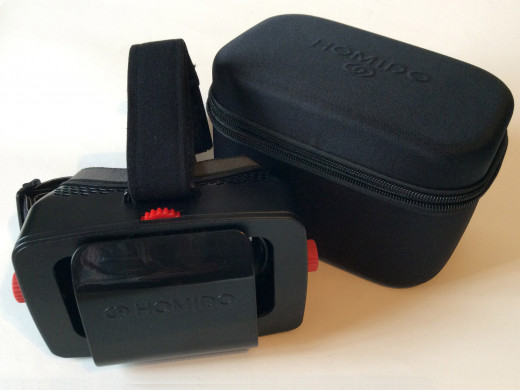
iPhone-Compatible Headsets
Obviously, the first thing you will want to check when choosing a VR headset is compatibility – both with the iPhone itself as well as with your particular model. A headset that will work with the iPhone 6 may not necessarily work with the larger iPhone 6 Plus, so be sure to check the product description carefully before ordering.
Also, be aware that not all headsets will work with the iPhone itself. Some are designed to fit only one particular brand or model, such as an Android device like the Gear VR, which, as mentioned above, will only work with Samsung’s Galaxy Note 4 or the Galaxy S6 and S6 Edge.
One VR headset that will work with the various sizes of iPhone is the Homido headset (pictured). See my review of the Homido here.
It may not be well-publicized, but Google Cardboard will also work with the iPhone. Cardboard can be constructed at home using online templates, or a ready-made version can be purchased online.
The phone is held in place by a flap which is secured by a couple of pieces of Velcro, so it will work with various makes and models of smartphone. If you have an iPhone 6 Plus, however, do be sure that the model you construct or buy will fit the larger form factor.
One thing that may cause you a bit of trepidation is the magnet at the side of the Google Cardboard headset. Will this work with the iPhone? The answer is yes, although the magnet placement may or may not be ideally positioned for your particular model.
I have not tested out the various versions of Cardboard, but I do know that the iPhone has a built-in magnet sensor, and I have used a small, hand-held magnet to successfully control a VR app on my device. Some apps use a magnet for stopping and starting, such as to initiate or terminate a walk sequence.
The iPhone as a VR device
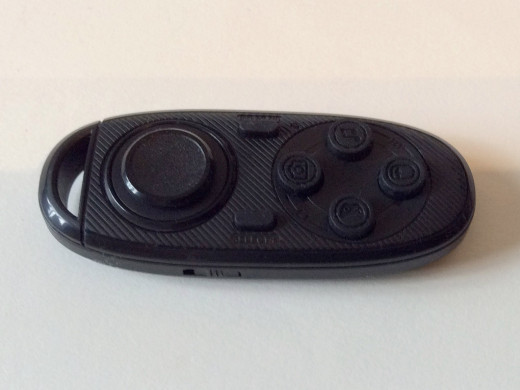
iPhone-compatible Controllers
Another consideration is the purchase of a handheld controller, which may be useful for certain VR games. Since the iPhone has built-in Bluetooth, it can easily be paired with compatible controllers for use in various games. Some controllers, however, may have special features and options that only work with Android devices, so read the product specifications carefully before ordering.
To be honest, not a lot of games for the iPhone make use of a handheld controller. As of this date, I have found only one – a flight simulator. Most games are controlled simply by looking in a particular direction. For example, you may start or stop walking by looking down at your feet, or you may shoot a gun by staring at a particular target so that an on-screen crosshairs is centered at the point where you want to aim.
As VR progresses on the iPhone, I expect future games that make use of a controller to be released, as this is the best way to get sophisticated and fine-grained control over many games.
Types of virtual reality experiences for the iPhone
Guide Apps
| Get a clickable listing of VR apps available in the app store
|
Roller Coasters
| Experience the classic carnival ride from the comfort of your own swivel chair
|
Games
| Exercise your fast twitch reflexes in virtual-reality
|
VR Environments
| Explore worlds from the comfort of your own home
|
Experiences
| Take a wild ride in virtual-reality
|
Dramas
| Be an active participant in a virtual story
|
Augmented reality
| See things around you that don't really exist
|
Videos
| Watch documentaries and dramas in stunning 360° and in 3 dimensions
|
Virtual Objects
| Rotate and examine objects that seem to be floating in front of you
|
Apps
The real proof of virtual reality on the iPhone is the number and quality of apps that it supports, and in this department the iPhone certainly does not disappoint! Although smartphone virtual reality is still in its infancy, the momentum of the App Store and the sheer number of developers writing for iOS ensures that the iPhone won't fall too far behind the competition. Just type"virtual reality" into the search box of the App Store, and you will see a number of choices.
Be aware, however, that not all of the selections will be virtual-reality apps. Some will be games with a “virtual-reality” theme; others will merely have the words "virtual" or "reality" somewhere in the name or description. For this reason, one of the first things you will want to do is consult one of the guide apps to virtual-reality on the App Store. Below you will find my own (very incomplete) guide.
Virtual-reality apps for the iPhone can fall into any of several categories. What categories they fallen to depend on the one doing the categorizing, and some apps may fit into more than one, but here is my own personal list of categories:
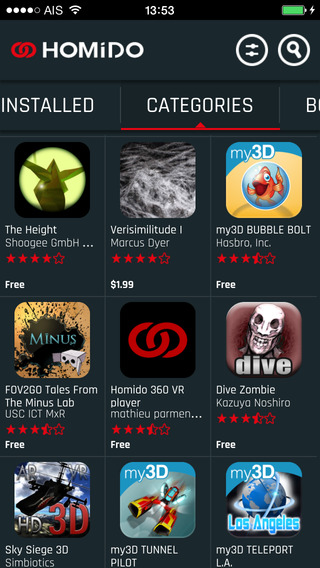
Guide Apps
This is one of the first types of apps you will probably want to download, as it will provide handy links to the top virtual reality currently available on the App Store.
HomidoCenter is the most useful app I have found in this category so far. It was also the way I found out about Homido brand of VR headset (you can see my review of the Homido headset here).
The app is divided into sections: Featured, Installed, Categories, Bookmarks, Info and Submit. The most useful section is the Categories section, which lists available VR apps divided by genre: Relaxation, Roller Coaster, Shooters, Simulation, Space and so on.
This app does much of the work for you in finding virtual reality available for the iPhone, but you will probably want to do a search directly on the App Store as well to make sure you don't miss anything.
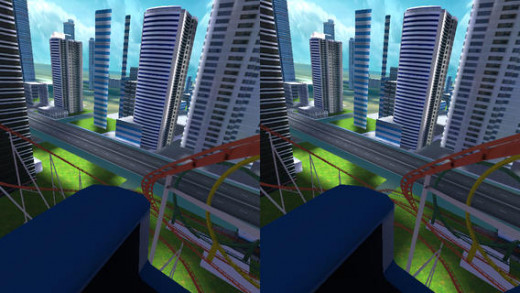
Roller Coasters
What would virtual-reality be without roller coasters? This is one of the most natural apps for the genre. Even if you are afraid of real roller coasters, you will probably have a lot of fun with this category. After all, there is no danger involved (aside from maybe getting a little queasy).
The best roller coaster experiences have a particular theme. For example, the Unlock the World roller coaster (surprisingly enough, it's from Avis, the car rental company) takes you on a ride through landmarks around the world in the countries that Avis serves – past the Statue of Liberty in New York City, alongside the great pyramids of Egypt, through the mouth of the Sphinx, and so on.
The Cmoar Roller Coaster combines the experience of a roller coaster with the wild west – through mine shafts, across great canyons, and even over boiling pits of lava – with the added touch of a few dragons thrown into the mix for good measure!
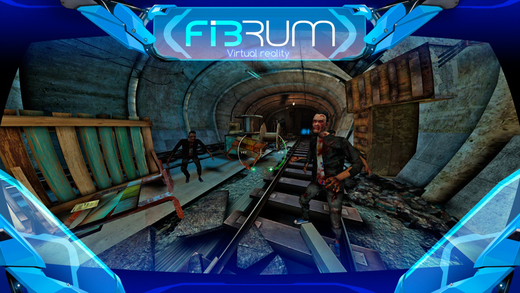
Games
This is another natural for virtual-reality. Shoot-em-up games, flying games, racing games - they can all take great advantage of the VR experience.
The biggest problem with games is deciding how to control them. Since you can't use the most natural interface of the iPhone when it is mounted in a headset - that is, the touchscreen - developers have had to find other ways to control the game environment.
Most games simply require you to look in a certain direction, such as to position an on-screen crosshairs over an opponent in a shoot-em-up game, and some few use a magnet or handheld Bluetooth joystick. As the iPhone virtual-reality segment matures, we will probably see more flexible options for control.
One of the best done virtual-reality games that I have found so far is Zombie Shooter by FIBRUM (pictured), which takes you through an abandoned subway tunnel in which you have to pick off creepy zombies that come at you from all directions.
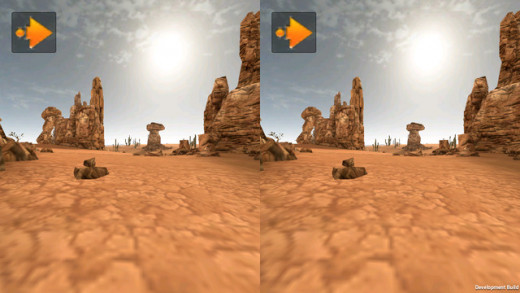
Environments
Environments are onscreen worlds that you explore virtually. You don't necessarily do anything in these types of games; you just walk and look around. It's a way to get a good feel for what virtual-reality is capable of.
VR Experience By Geoffrey CHARRA is not a free app, but it offers one of the best values for money, allowing you to explore a Space Ship, Desert, Forest, Center of the Earth, Icy Wasteland, Jungle, a Volcano, a Castle, a Cathedral, an Old-style Industrial area and more.
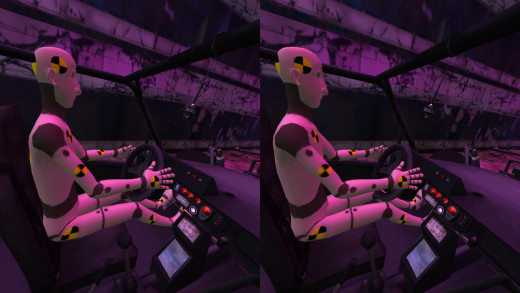
Experiences
Similar to environments, experiences go a little deeper by putting you into the action. With experiences, you might be passively riding in a dune buggy, biking along a beach or swinging on a swing that's carrying you high above the rooftops in the middle of a city. (Roller coasters also fall into this category.) Mad race by FIBRUM takes you on a wild ride through an apocalyptic city wasteland where pieces of rubble are falling all around you, driven by a crash test dummy who doesn't care whether you live or die!
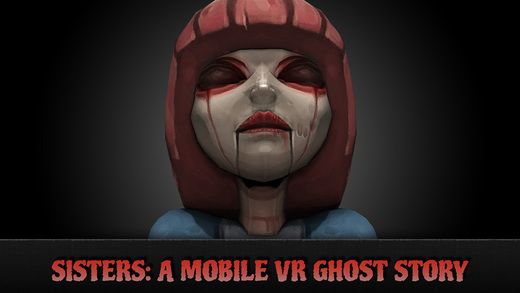
Interactive Stories
Story apps are still a relative rarity in the virtual-reality space. A good example is Sisters, a haunted house tale that finds you in a darkened room while eerie goings-on occur all around. The story actually paces itself by detecting where you are looking at any one moment and guiding the action so that it happens at the appropriate instant. I look forward to seeing more apps in this category in the future.

Virtual objects
Imagine viewing a 3D model of the human brain that rotates in front of you as you turn your head. or a detailed model of a poliovirus. Or a DNA molecule. Or a wasp. Or King Tut's mask. Or the complete solar system. Or an infinite variety of other objects. You can view all these things with EON Experience VR, a free app for the iPhone, proving that VR can be a great educational experience as well as fun!

Augmented reality
Augmented reality apps are designed to work either with or without a headset, but I find the use of a headset makes them that much more realistic. An augmented reality app might make dollar bills appear to fall from the sky all around you, a robot to dance in your own environment or even realistic, gigantic dinosaurs appear to lumber and fight with each other just a few feet away! In Dinosaurs Everywhere, you can almost see the muscles ripple under the scaly skin of the Jurassic creatures as they move around you in a highly realistic fashion. This is another category I would like to see more of in the future.
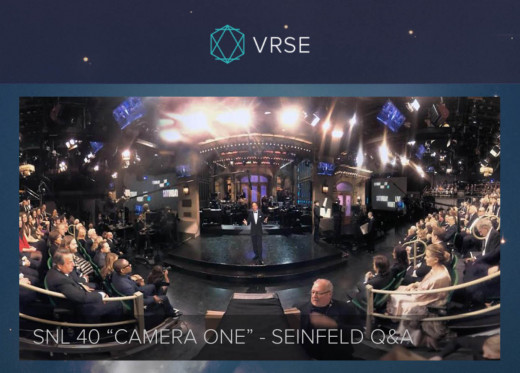
Videos
Virtual-reality videos are a huge category in and of themselves. Filmakers use special cameras to film action in a full, 360° sweep – up, down and all around you. A virtual-reality video may be CGI (computer graphics generated) or live-action. It may put you in the audience of Saturday Night Live or in the middle of a Syrian refugee camp. You might find yourself trekking through the jungles of Africa or riding along with a motorcyclist on a tunnel race. Virtual reality movies are a huge genre that Hollywood has yet to exploit.
Which category of VR apps is your favorite?
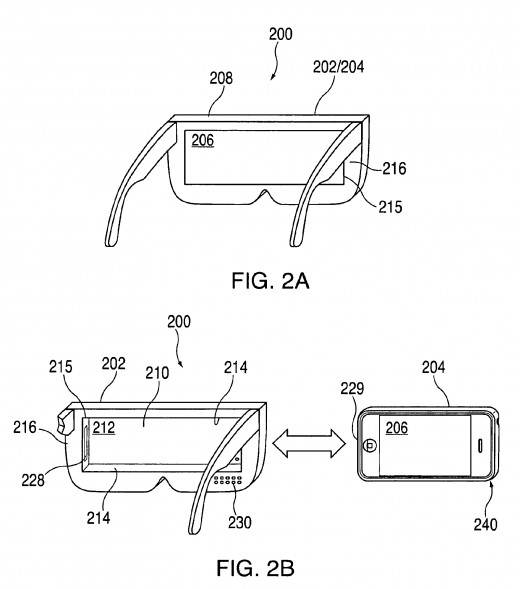
Future: Apple’s headset patent?
Apple has been issued a patent for its own virtual-reality headset titled, "Head-Mounted Display Apparatus for Retaining a Portable Electronic Device with Display."
The device makes sense for Apple, since it uses the company's popular iPhone, which is slid into the headset, placing the display right in front of the user's eyes.
It's worth noting that Apple often takes out patents for technologies that never see the light of day. Still, if virtual reality becomes popular enough with the public, it’s not hard envisioning Apple entering the virtual-reality sphere. Often, a technology doesn't truly take off until Apple gets involved, so who knows? The future could be very exciting indeed!


